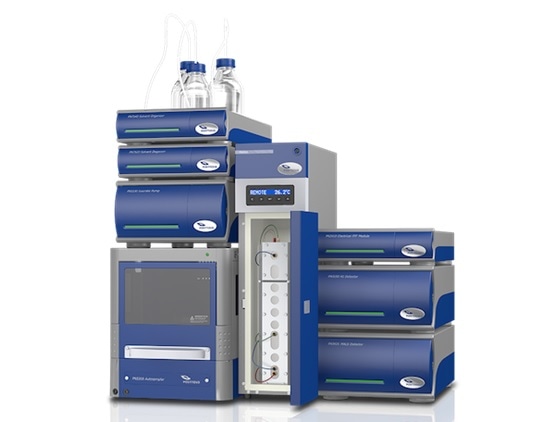An informative applications article from Postnova Analytics demonstrates how its Asymmetrical Field Flow Fractionation (AF4) technology can be used, with no sample pre-treatment, to separate large gluten proteins and provide accurate molecular weight and molecular size (Rg) data.
 Interest in gluten proteins has become increasingly widespread in recent years due to the rise in Celiac disease, which affects up to 5% of the world’s population, and by association the need for gluten-free diets. One of the challenges for the analysis of gluten proteins is their relatively high molar mass and consequent large molecular size. With gluten proteins exhibiting molecular weight as large as 10 million Daltons (Da), this makes them difficult to separate and characterize by column-based chromatography techniques such as Size Exclusion Chromatography (SEC). Traditionally analysis of gluten samples has required for them to sonicated prior to chromatographic separation, and the resulting fragments analyzed.
Interest in gluten proteins has become increasingly widespread in recent years due to the rise in Celiac disease, which affects up to 5% of the world’s population, and by association the need for gluten-free diets. One of the challenges for the analysis of gluten proteins is their relatively high molar mass and consequent large molecular size. With gluten proteins exhibiting molecular weight as large as 10 million Daltons (Da), this makes them difficult to separate and characterize by column-based chromatography techniques such as Size Exclusion Chromatography (SEC). Traditionally analysis of gluten samples has required for them to sonicated prior to chromatographic separation, and the resulting fragments analyzed.
The application article describes how a Postnova AF2000 AF4 system was used with two detectors monitoring the eluent to separate glutens and characterize them. Firstly, a Postnova 21-angle Multi Angle Light Scattering (MALS) detector for measuring the Rg of glutens and their aggregates and agglomerates; and secondly a Refractive Index (RI) detector which is sensitive to protein concentration and, in combination with MALS, can provide molecular weight measurements.
The presented data shows how the AF4-MALS-RI technique can separate large gluten proteins, without the need for time-consuming sample pre-treatment, enabling a more direct measurement of their molecular weight and radius of gyration (Rg) distributions. In addition, for two of the samples analyzed, the upper end of the molecular weight distribution was significantly higher than the expected 10MDa. Consequently techniques, such as SEC, that use chromatography columns would have filtered out some or all of these large gluten complexes resulting in incorrect determination of the gluten’s overall size and molecular weight distribution.
For a copy of the application article please visit https://info.postnova.com/electrical-asymmetrical-flow-field-flow-fractionation/.